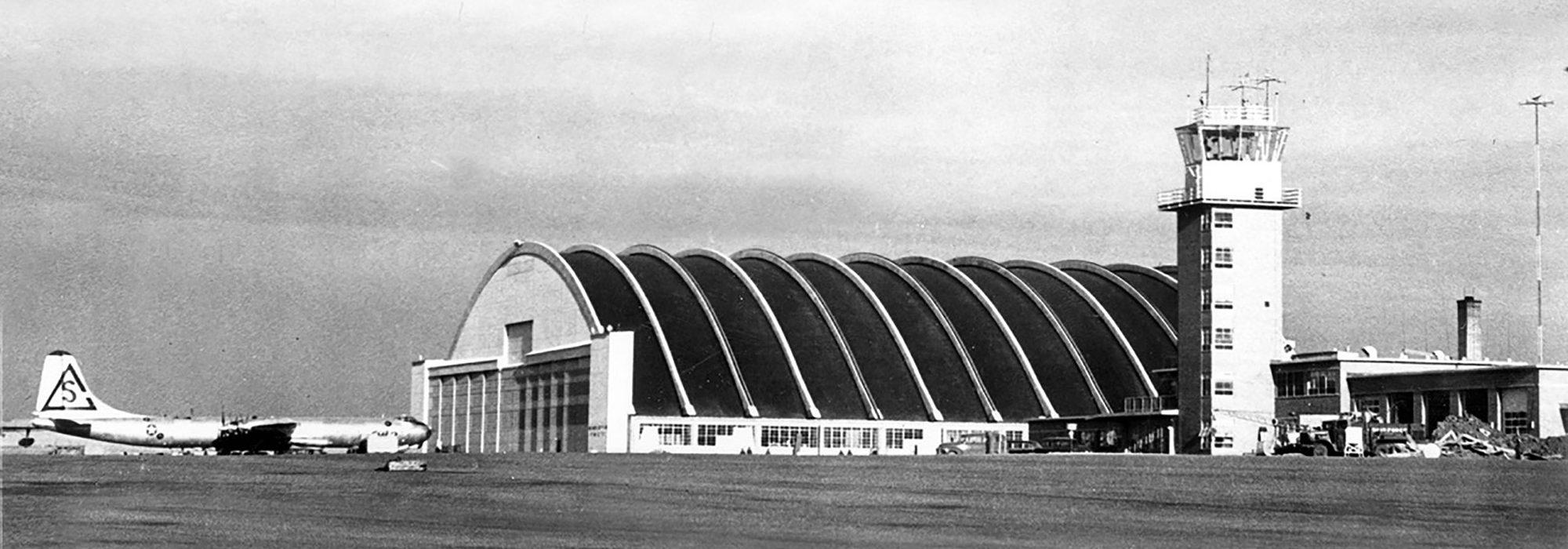From the Front
Richard Ellsworth—a big South Dakota air base carries his name—was not your typical wing commander. Enlisted mechanics often were startled to find him at their sides, working late into the night to help prepare aircraft for action.
Not bad for a general. It was his way—hands on, leading from the front—but it was a trait that, in the end, exacted a price.
Richard Elmer Ellsworth, born in 1911 in Pennsylvania, graduated from high school in 1929 but deferred college, hoping for a West Point appointment. He spent two years in the National Guard, after which he did in fact get the appointment.
Ellsworth entered West Point and graduated with the Class of 1935. The newly minted second lieutenant relocated to Texas for his flight training and in late 1936 received his wings.
For the next six years, Ellsworth’s career was steady but unspectacular. He rose to lieutenant colonel and earned an advanced degree (in meteorology) from California Institute of Technology. Then came World War II.
Through 1942, Ellsworth served in Alaska and the Southwest Pacific, working as both a transport pilot and as an expert, pulling together vital data on Pacific weather patterns.
The year 1943 was pivotal. Ellsworth was promoted to colonel and transferred to the China-Burma-India Theater, where he started flying combat missions with 10th and 14th Air Forces.
Ellsworth pulled 400 combat missions, amassing nearly 800 combat hours. He was awarded battle stars for eight campaigns. His many decorations included two Distinguished Flying Crosses.
Now a war hero, Ellsworth returned to the U.S. and quickly advanced in USAF. In quick order, he served as chief of operations at Air Weather Service, commander of 380th Reconnaissance Group, and chief of plans for 2nd Air Force. For good measure, he graduated in 1950 from the Air War College.
In the early 1950s, Ellsworth became commander of 28th Strategic Reconnaissance Wing, a SAC B-36 outfit at Rapid City Air Force Base, S.D., near the Black Hills. He received his first star.
That’s where the Ellsworth success story comes to an end.
On March 18, 1953, Ellsworth was co-piloting a RB-36H bomber on a 25-hour simulated combat mission from the Azores to South Dakota. The crew, observing radio silence, switched off radar and used celestial navigation. Late at night, the bomber hit bad weather, went off course, and struck a low peak on Newfoundland. The crash killed Ellsworth and the other 22 crew members.

President Dwight D. Eisenhower renamed the Rapid City base in his honor. Years later, Col. John Edwards, 28th Bomb Wing commander, noted, “Brig. Gen. Ellsworth led from the front—a very good example for enlisted, officers, and civilians.”
Today, Ellsworth Air Force Base is a major hub of USAF’s global strike capabilities, its 28th Bomb Wing being one of two locations of the B-1B long-long bomber. It has been selected as a preferred site for the first operational B-21 Raider bomber unit.
Richard Elmer Ellsworth

- Born: July 18, 1911, Erie, Pa.
- Died: March 18, 1953, Newfoundland, Canada
- Colleges: U.S. Military Academy, West Point N.Y.; California Institute of Technology
- Occupation: U.S. military officer
- Services: Pennsylvania National Guard; U.S. Army (Air Corps, Air Forces); U.S. Air Force
- Main Eras: World War II, Postwar
- Years Active: 1929-53
- Combat: China-Burma-India Theater 1943-45
- Final Grade: Brigadier General
- Honors: Legion of Merit, Distinguished Flying Cross (3) Air Medal (3), Campaign Battle Star (8) China Air Force Wings.
- Resting Place: Black Hills National Cemetery, Sturgis, S.D.
Ellsworth Air Force Base

- State: South Dakota
- Nearest City: Rapid City
- Area: 7.59 sq mi / 4,858 acres
- Status: Open, operational
- Opened as: Rapid City Army Air Base: Jan. 2, 1942
- Renamed: Rapid City Army Air Field: Sept. 1, 1946
- Renamed: Rapid City Air Force Base: Nov. 28, 1947
- Renamed Weaver Air Force Base: Jan. 13, 1948
- Renamed Rapid City Air Force Base: June 24, 1948
- Renamed Ellsworth Air Force Base: June 1, 1953
- Current owner: Air Force Global Strike Command
- Former owners: Second Air Force, Continental Air Forces, Strategic Air Command, Air Combat Command.
- Home of: 28th Bomb Wing
